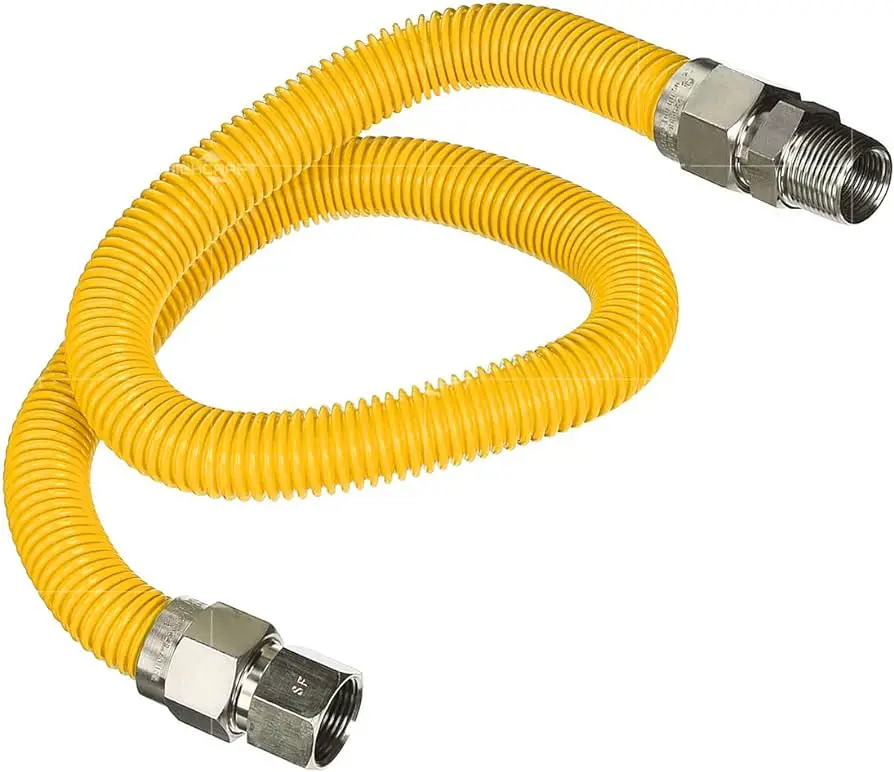For a range, a 1/2 or 3/4 gas line is needed for proper installation. The size will depend on the range’s BTU rating and the distance from the gas source.
When selecting the appropriate gas line size for your range, it’s crucial to consider the appliance’s specific requirements as well as local building codes. This ensures safe and efficient operation while also preventing potential gas leaks or other safety hazards.
Understanding the requirements for gas line installation is essential for a successful and compliant setup, so be sure to consult a professional if you have any doubts or questions.
Choosing The Right Gas Line Size For Your Range
When it comes to choosing the right gas line size for your range, it’s important to understand the gas line requirements and the implications of using a 1/2 inch or 3/4 inch line. Proper gas flow is crucial for the efficient and safe operation of your range. Both 1/2 inch and 3/4 inch lines have their own advantages and limitations. While a 1/2 inch line is suitable for most residential ranges, a 3/4 inch line may be necessary for ranges with higher BTU outputs or longer distances from the gas source. Consider the BTU requirements of your range and the distance from the gas source to determine the appropriate line size for optimal performance.
Considerations For 1/2 Or 3/4 Gas Line For Range
Evaluating Range BTU Requirements: When selecting a gas line for your range, it is essential to assess the BTU requirements of the appliance. Consider the total BTUs of all burners, oven, and broiler to determine whether a 1/2 or 3/4 gas line is suitable for your range.
Assessing Kitchen Layout Constraints: The layout of your kitchen plays a pivotal role in determining the gas line size. Take into account the distance of the gas line from the range, the number of twists and turns, and any potential obstacles that might impact the gas flow.
Calculating Gas Line Distance to Range: Measure the distance between the gas line connection point and the range to determine the appropriate gas line size. Consider the total length and height variance along the path to accurately calculate the required gas line size.
Local Building Codes and Regulations: Always adhere to local building codes and regulations when deciding on the gas line size for your range. Consult with a professional to ensure compliance and safety in your kitchen.
Installation & Compatibility: 1/2 Vs 3/4 Inch Lines
When choosing between a 1/2 or 3/4 inch gas line for your range installation, several important considerations come into play. Professional installation by a certified technician is highly recommended to ensure safety and compliance with regulations. However, for those considering a DIY approach, it’s crucial to carefully assess the compatibility with existing gas systems. Prior to installation, gather the required tools and materials including pipe wrenches, thread sealant, and gas leak detection solution. Throughout the process, observe safety precautions such as turning off the gas supply and conducting a thorough leak check upon completion.
Advantages Of Upgrading To A 3/4 Inch Gas Line
Upgrading to a 3/4 inch gas line for your range offers several advantages:
- Enhanced Performance for High-BTU Ranges: A 3/4 inch gas line provides a higher flow rate, ensuring optimal performance for high-BTU ranges and reducing the risk of inconsistent heat.
- Future-Proofing for Kitchen Upgrades: By installing a 3/4 inch gas line, you prepare your kitchen for potential future upgrades or the addition of other high-demand gas appliances, saving time and money on future modifications.
- Reducing Risks of Gas Pressure Drops: With a larger gas line, the potential for gas pressure drops is minimized, promoting a consistent and reliable fuel supply to your range, ultimately enhancing safety and performance.
Troubleshooting Gas Line Issues
When troubleshooting gas line issues for your range, it’s important to identify common gas flow problems. Look for signs of gas leaks, such as hissing sounds or unusual odors, and inspect the gas line for damage or corrosion.
To check the line’s integrity, perform a soapy water test on the connections. Bubbles will form if there’s a leak. If you’re uncertain about the gas line, it’s best to call a professional plumber to conduct a thorough inspection and address any concerns.
Maintaining Your Gas Line Post-installation
Routine Inspection Intervals: It is crucial to schedule regular inspections to ensure the gas line’s integrity. This proactive approach helps in detecting early signs of wear and tear before they escalate into safety hazards.
Detecting Early Signs of Wear and Tear: Look for any visible signs of corrosion, such as rust or pitting on the gas line. Pay attention to any unusual odors or hissing sounds near the line, as these could indicate a potential leak. Promptly address any identified issues to prevent further damage.
Cleaning and Upkeep Recommendations: Regularly clean the gas line, shielding it from dirt and debris that could cause damage over time. Ensure the area around the gas line is well-ventilated and free from obstructions. Follow the manufacturer’s guidelines for maintenance to prolong the lifespan of the gas line.

Credit: diy.stackexchange.com
Frequently Asked Questions On 1/2 Or 3/4 Gas Line For Range
What Size Gas Line Do I Need For A Range?
You will need a 1/2 inch gas line for a residential range unless the manufacturer specifies otherwise. A 3/4 inch gas line may be required for commercial or high-power ranges.
Can I Use A 3/4 Inch Gas Line For A Residential Range?
While it is possible to use a 3/4 inch gas line for a residential range, it may not be necessary unless the range has higher BTU output. Consult the range’s specifications or a professional for the best option.
What Should I Consider When Choosing A Gas Line For My Range?
Consider the range’s BTU output, local building codes, and the manufacturer’s recommendations when selecting a gas line size. A professional inspection and installation are recommended for safety and compliance.
Conclusion
The gas line size for your range depends on its BTU capacity. It’s crucial to ensure the right size for safety and optimal performance. Consider consulting a professional to determine the appropriate gas line size for your specific range. Making the right choice will ensure your cooking experience is both safe and efficient.

